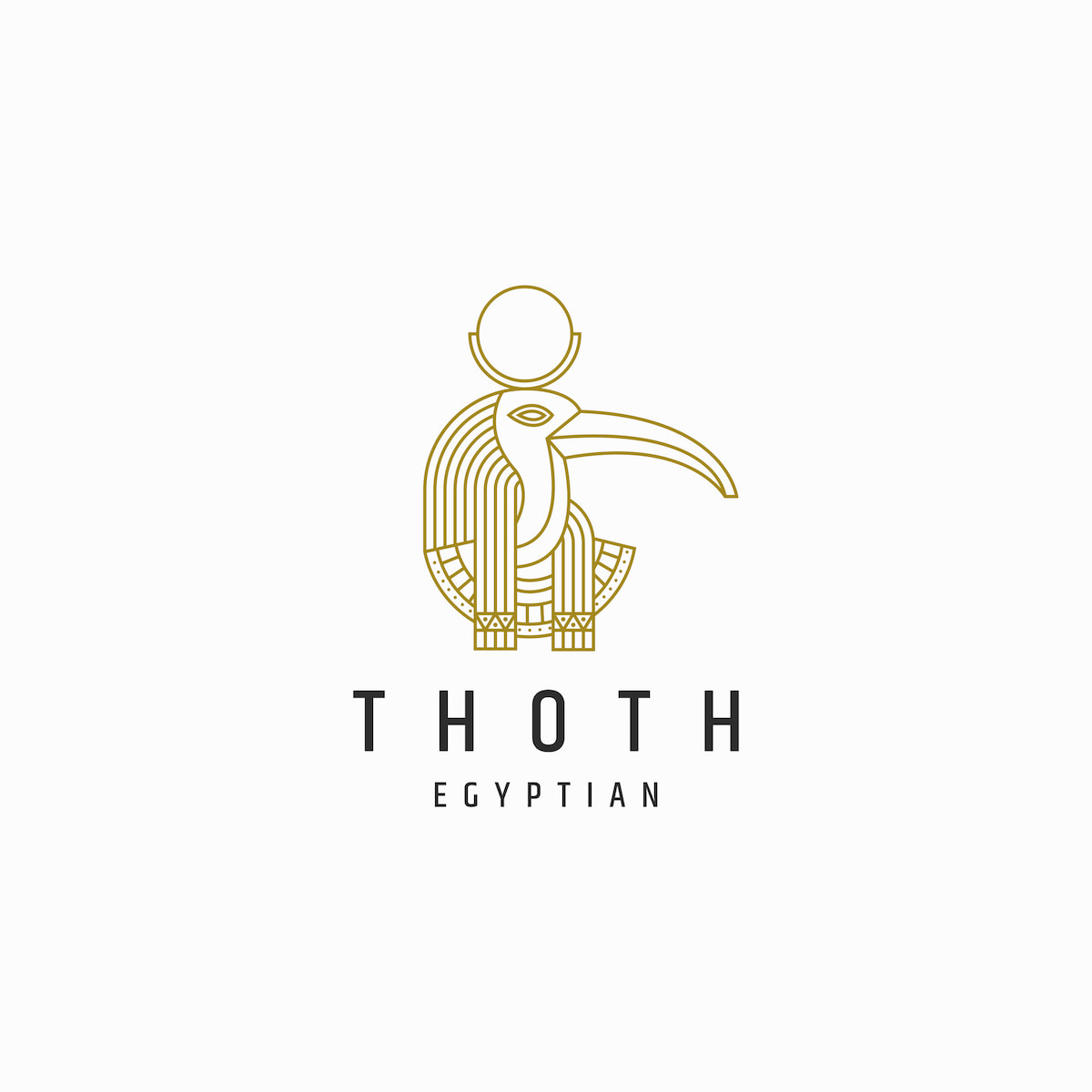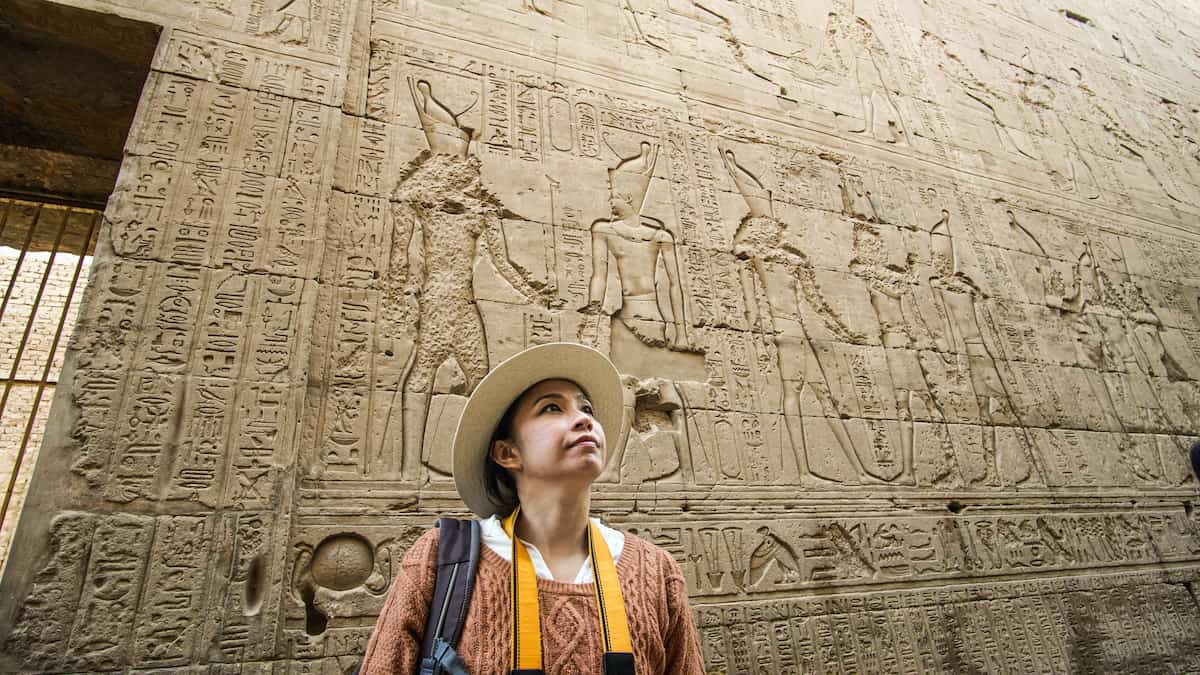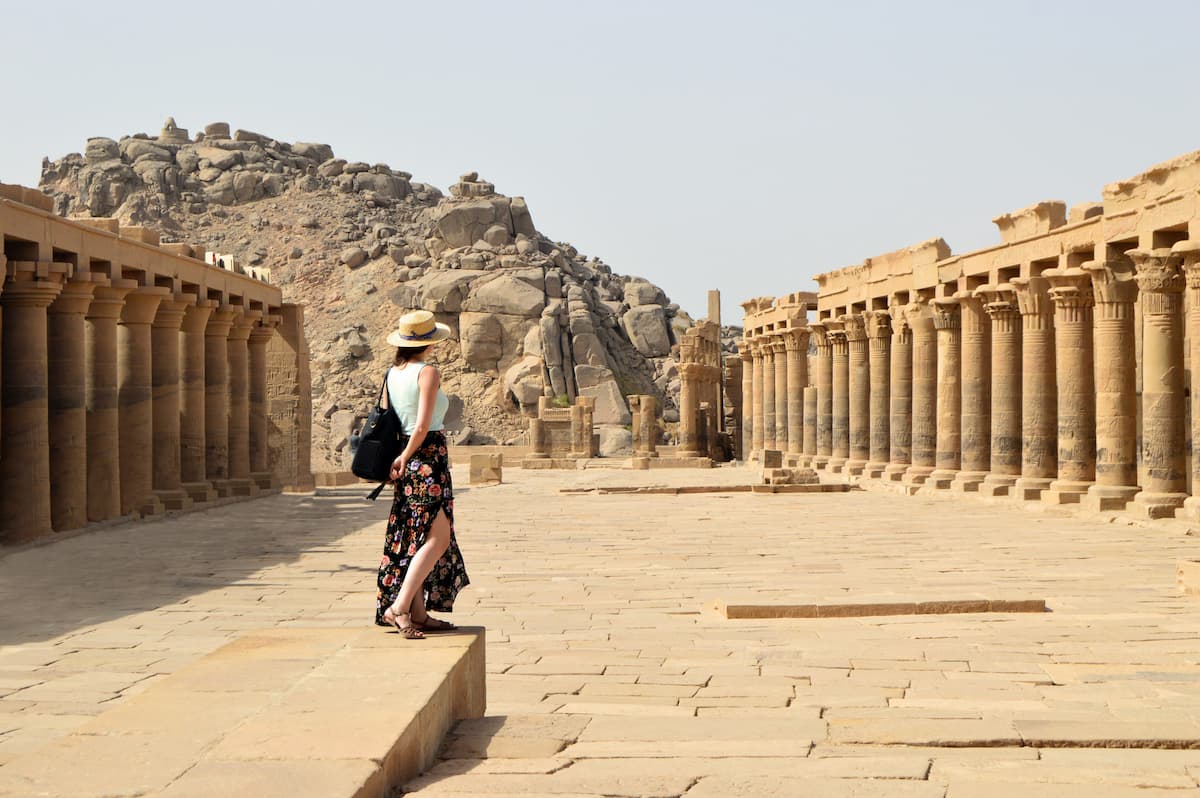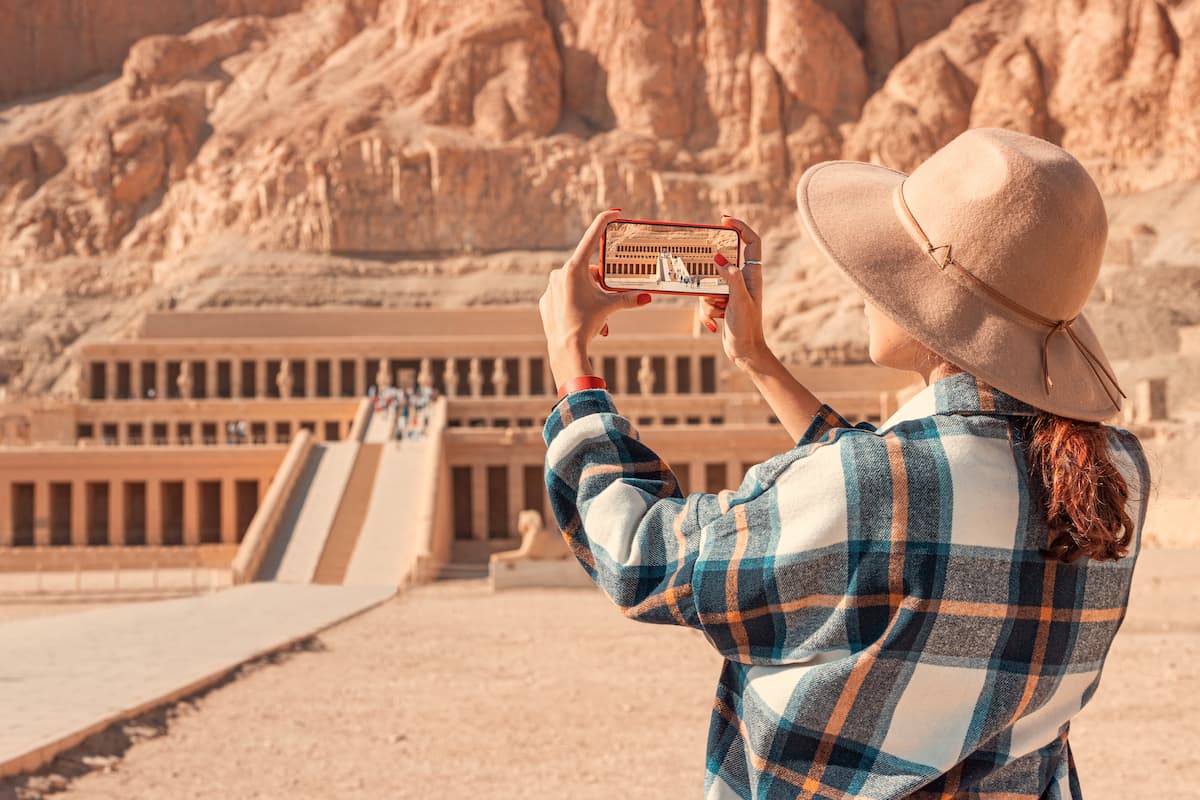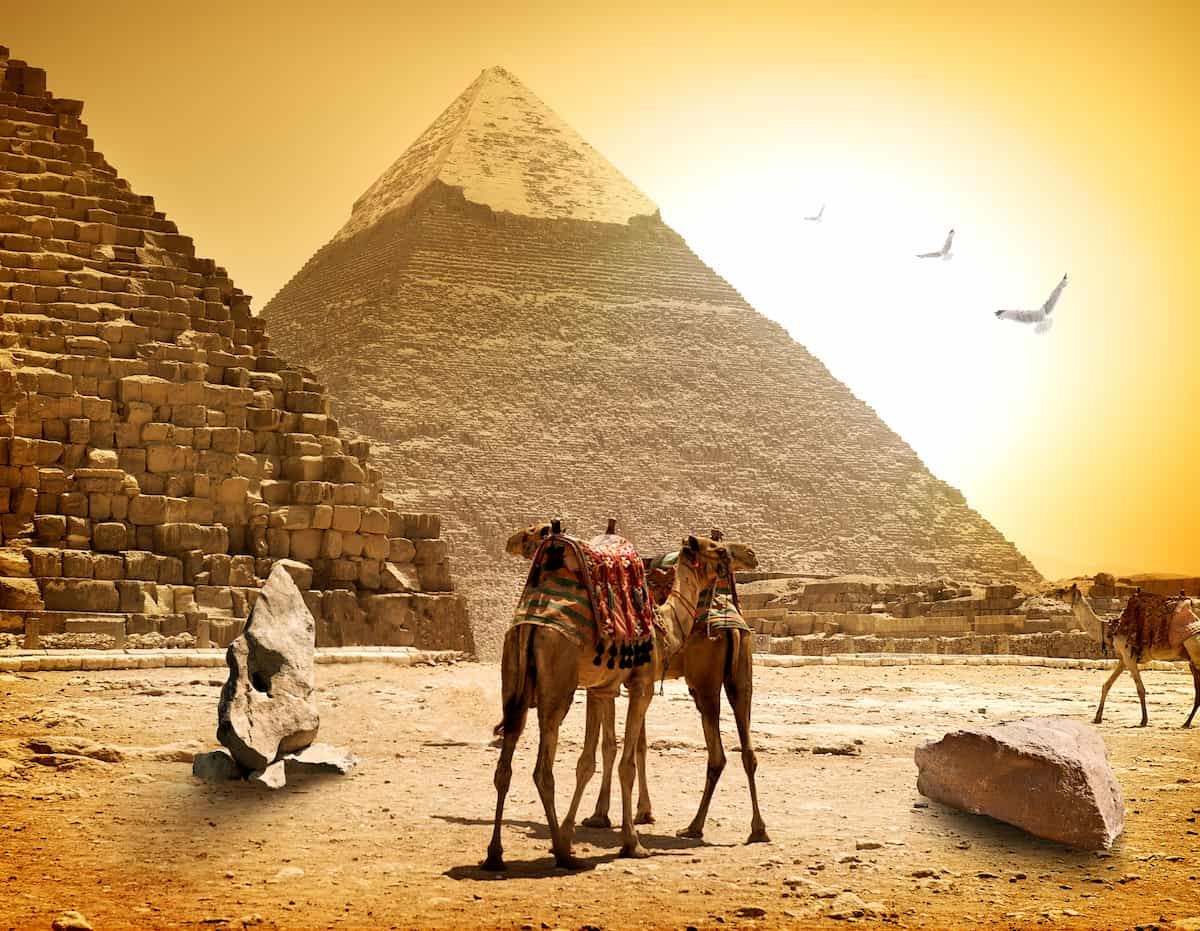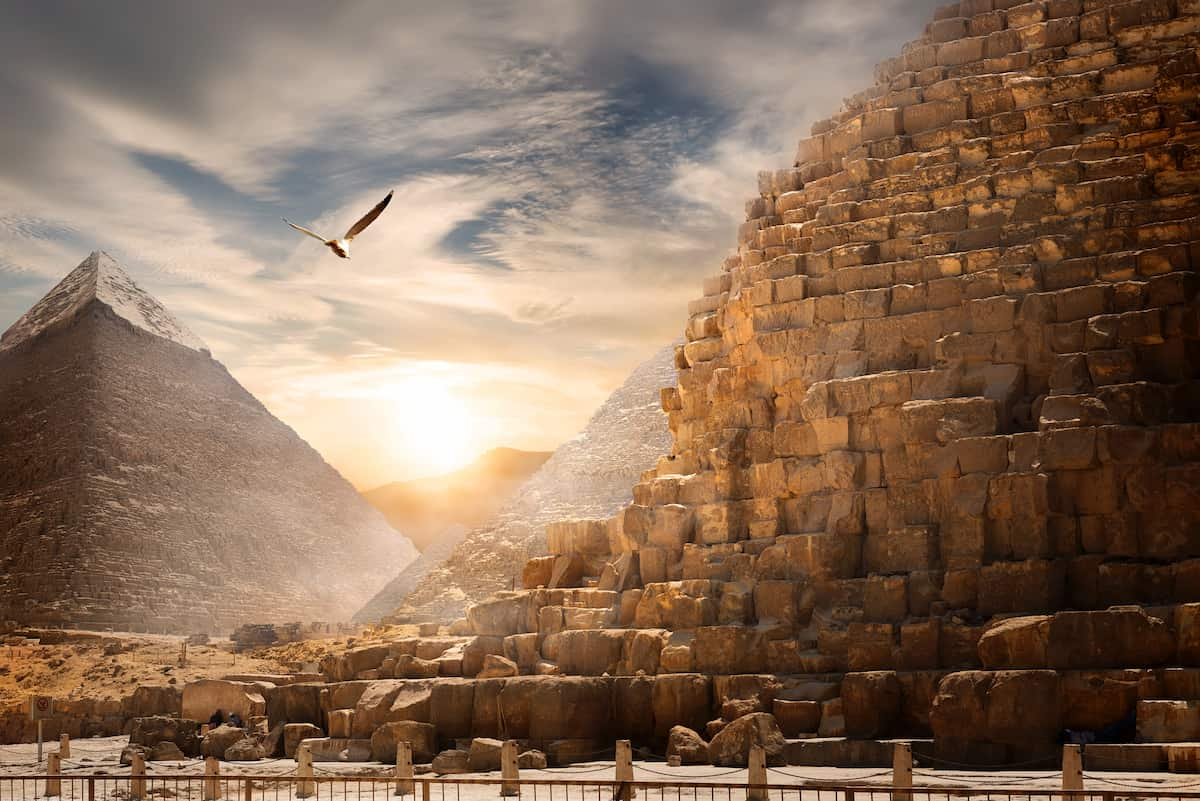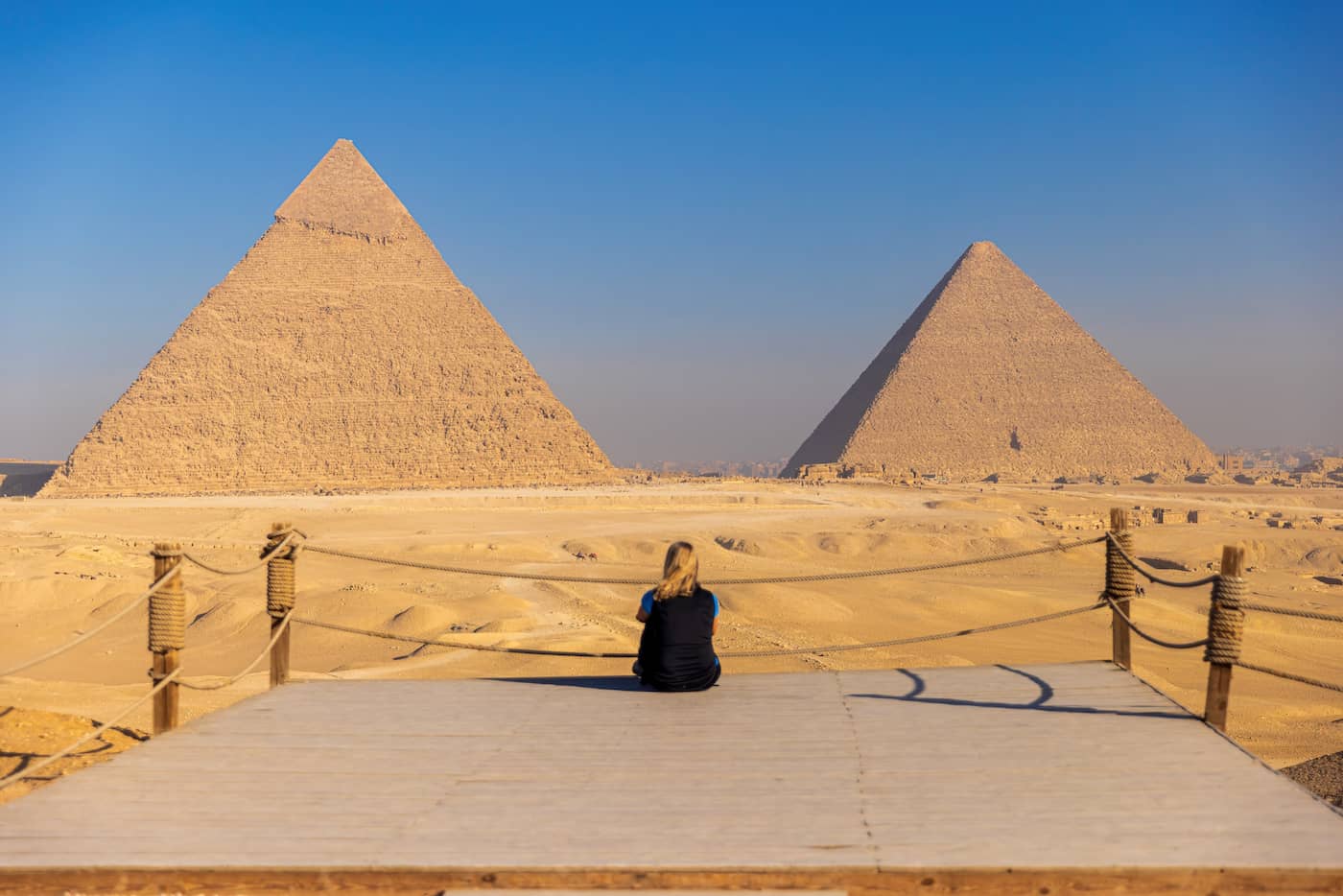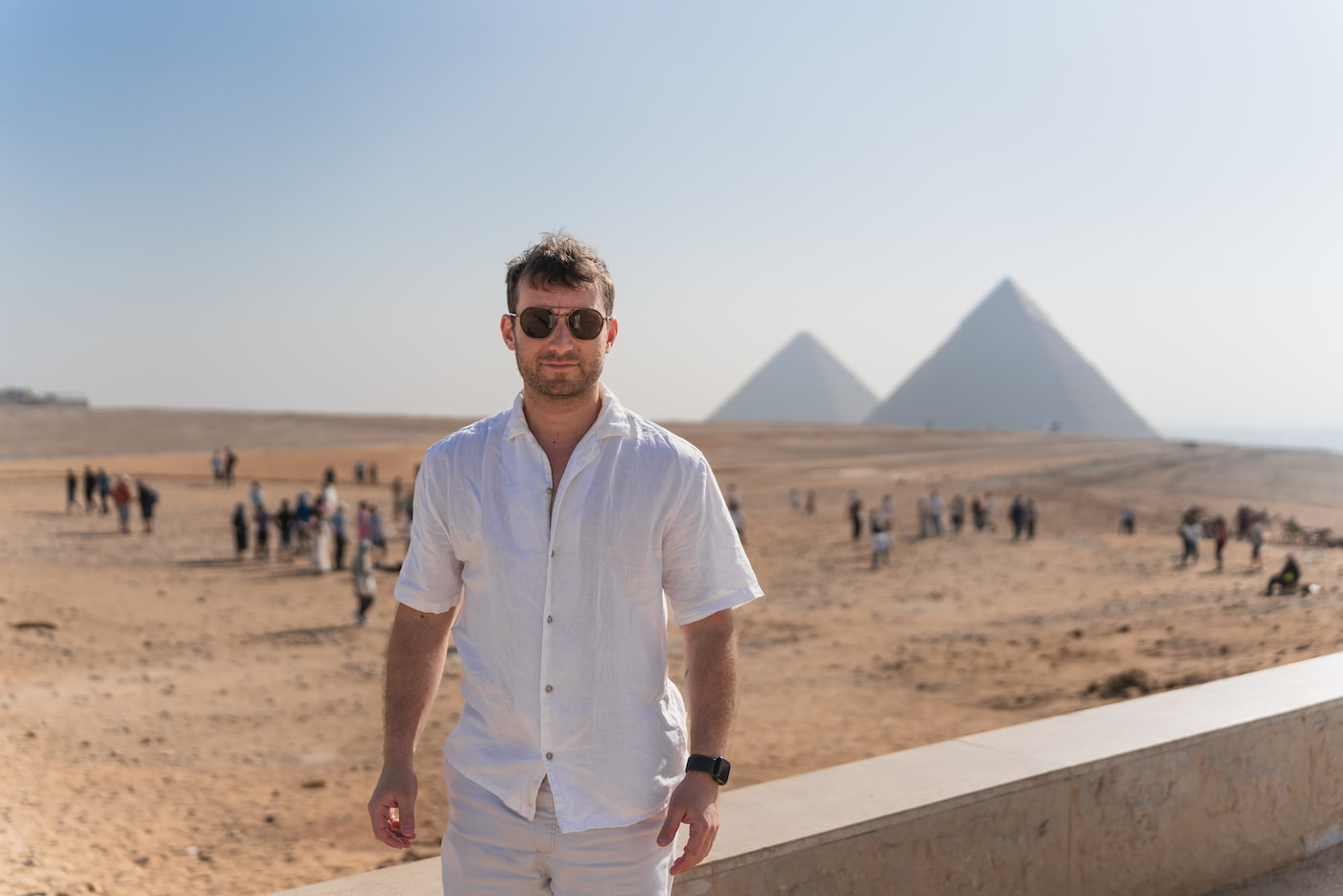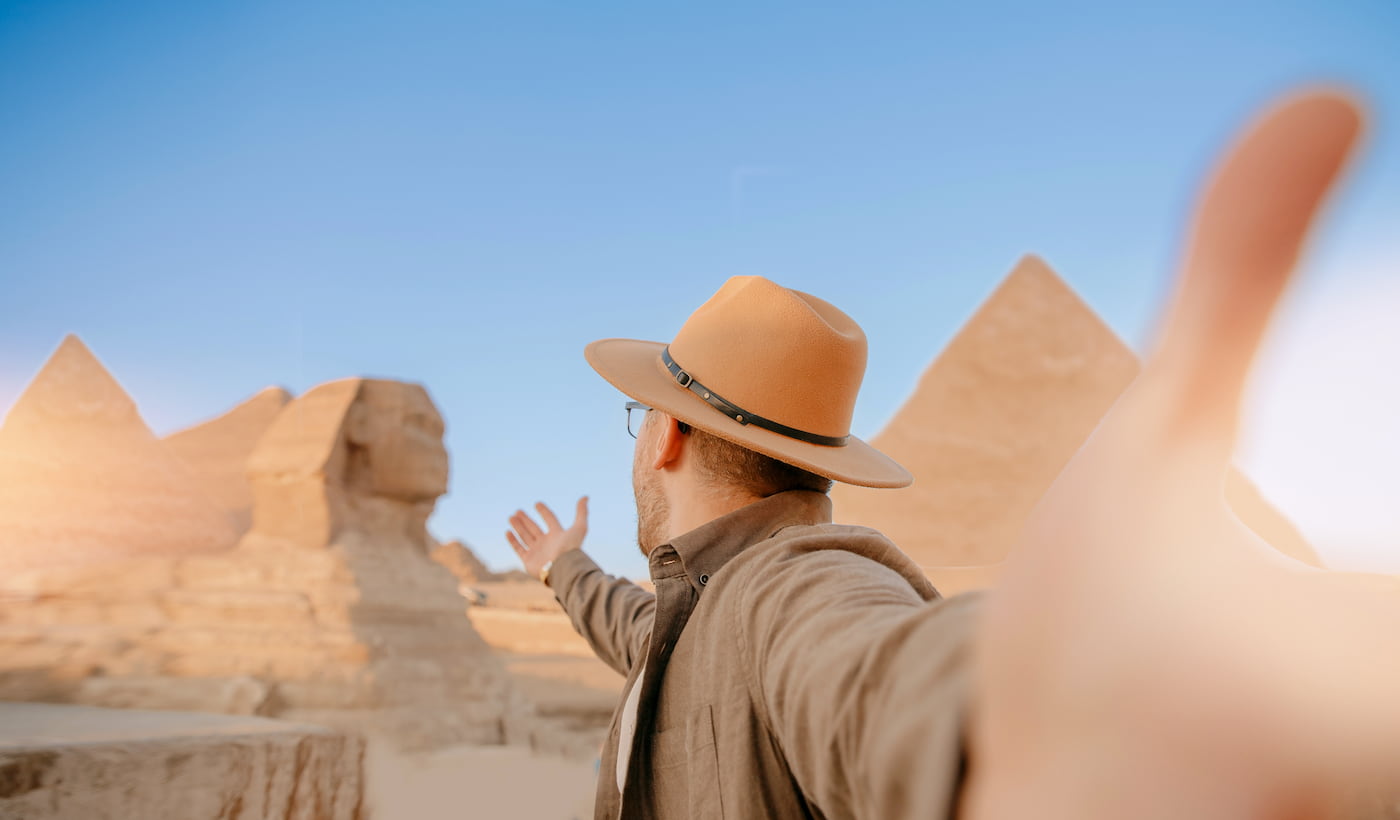Thoth Symbols and Meanings: Wisdom, the Moon, and Ancient Knowledge
Thoth Symbol, a god who is extremely popular in ancient Egyptian myths, is said to be inseparably linked to intelligence, knowledge, science, time, the moon, and even hieroglyphs of some texts. Moreover, Thoth was often seen in the image of a perching ibis or in that of a wild baboon, and he loomed very large both in the spiritual and intellectual affairs of the ancient Egyptians’ Religion. Thoth stood for a kind of knowledge, morals, law, and order that kept the Khemet (ancient Egypt) in balance.
The Egyptians believed that their deity Thoth created writing and speech and wrote down the scripts, which had the place for each character, his location, and even the tragic history of Egypt; hence, he is recognized as the god of the scribes, scholarship, and spiritual studies. Thoth was also seen as the playwriter of the gods, dispensing rulings and enforcing divine equity, particularly during the ‘weighing of the heart’ phase of the afterlife. As a result, Thoth was linked particularly to equality, justice, and the principle of Ma’at, meaning order, which is also known as the true law of the universe.
The symbols related to Thoth today are not especially religious, but especially the invokers of yesteryears shaped Thoth and how he acts. The ibis, a bird with a slender, curved beak, teaches inquiry, penetration, and intelligence. The hamadryas baboon, which is often found with Thoth in psychic and spiritual paradigms, provides wisdom and inner wisdom. His relationship to the moon denotes his star aspect and rule over time and space. Thoth is also usually shown carrying writing materials, such as a palette and a reed pen, which implies the creation of communication and the passing of sacred knowledge.
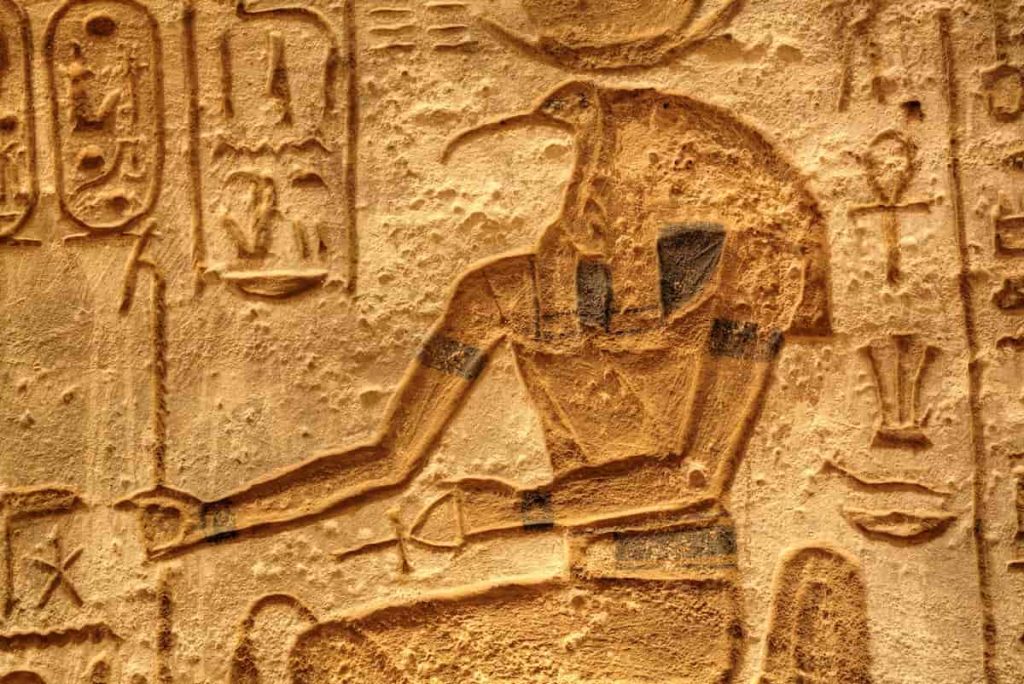
What Our Blog Aims For
This blog post aims to address in more depth the significance of the different symbols associated with Thoth and why they were given so much importance in ancient times. Each symbol, be it a part of a certain star or a particular piece of text, speaks of a larger narrative—that of progress, council, and the divine consciousness itself.
1. Who Is Thoth? Origins and Symbolic Meanings
Thoth (Djehuty), he who was venerated by the ancient Egyptians, was the god of intellect, literature, the moon, and sorcery. He played a significant role in both the divine and the human worlds, serving as the writer of the gods, the keeper of wisdom, and the ruler of the dead. There are numerous representations of Thoth where the associated symbols reveal, through their form, the very principles of divine authority and influence.
The Different Forms of Thoth’s Symbols
A quite unforgettable symbol which belongs to Thoth has to be the sacred ibis, a bird that is naturally known for its long and curving beak. The symbol of the ibis was given to him because of his sharp perception and administrative aspect, which was in line with his intellectual being. The ibis is even one of the hieroglyphs in his name. Alternatively, Thoth was also. Some traditions also linked Thoth with the crane and other long-beaked birds, symbols of precision and watchfulness..
Thoth was also associated with the waxing crescent, the lunar phase that follows the new moon and full moon phases, which expressed his influence over time, its astronomical divisions, and the lunar months. As the god of reckoning, his lunarity also wins the respect of controlling instances of church discipline, agriculture, and even ancient Egyptian religious practices.
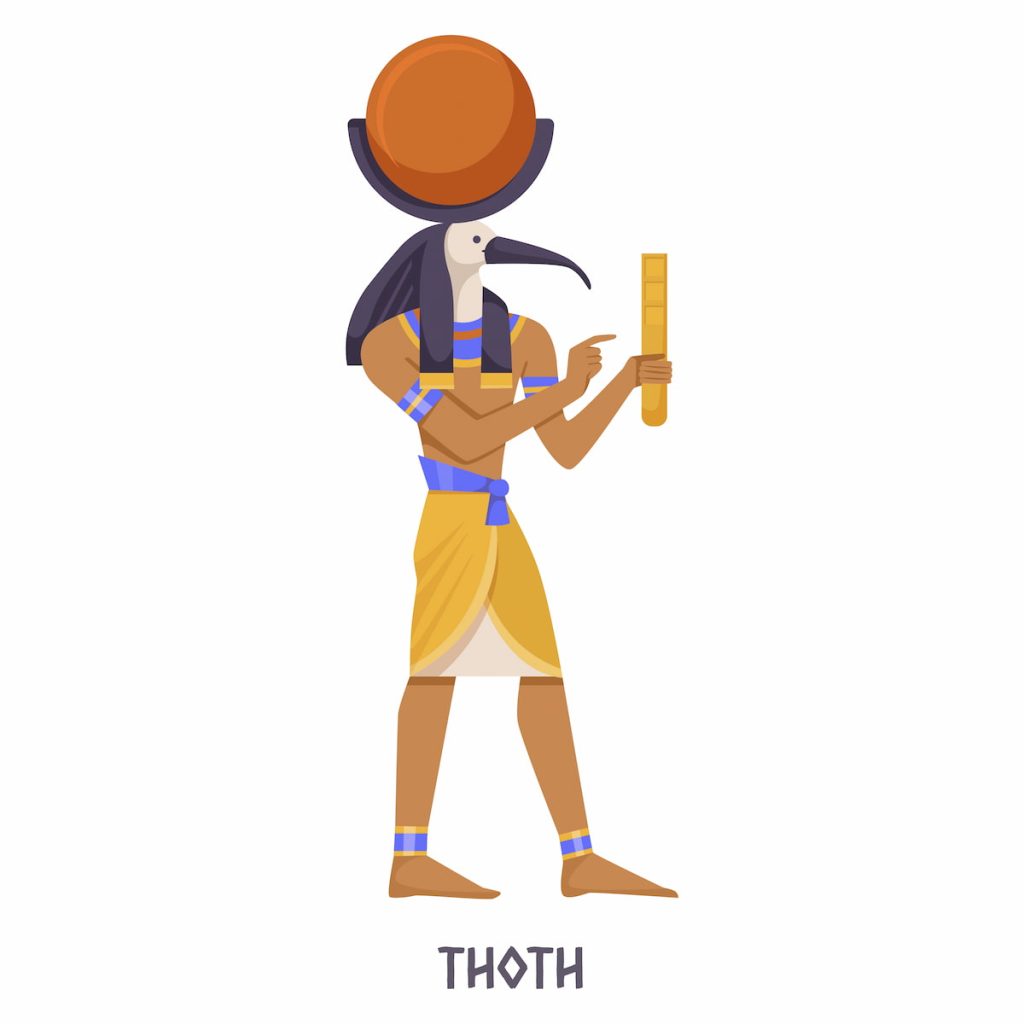
Who Is Thoth? Origins and Symbolic Meanings
Another set of symbols of great significance includes the palette for writing, the reed pen, and the scrolls that spoke of his evolution of writing and the science of keeping records. These implements illustrate him not just as a learner but as the supremely intelligent source of law, knowledge, and magic.
Thoth also appeared in performances where he holds a pair of scales, such a sight would usually be seen in images depicting the “Dismarktelieme” ceremony. It was in these instances that he presented the scopes of duty of souls, but they solved the problems in such circumstances ans which is indicative of his advocacy of justice, balance, and morals of the society.
Each of these signs clearly shows how the Egyptians perceived the God’s role as a personification of intelligence, magic, and stability as a standard requirement for existence.
2. Major Symbols of Thoth and What They Represent
If analyzed from an evolutionary perspective, Egyptian mythology offers multiple images of Thoth as cryptic and coded through various sacred signs and symbols, each of which reflects a certain unique aspect of his divine power. Whilst many other deities would have had their war or fertility symbols, the essence of those of Thoth is that they communicate knowledge, balance, time, and sacred order.
-
The Ibis
One of the most evident and inherent collective stereotypes of Thoth belongs to the ibis bird, which can often be observed wading in the Nile water from its beak to its feet. Thoth in Egyptian art was commonly represented as a man having the head of an ibis, like that of the bird mentioned earlier in that region. Over and above, the measured way in which the bird walked was taken as the industrious, intelligent behavior’s representation for these people, the sense of things having a clear meaning, and felt not least of all in the connection with the god of writing and wisdom, Thoth.
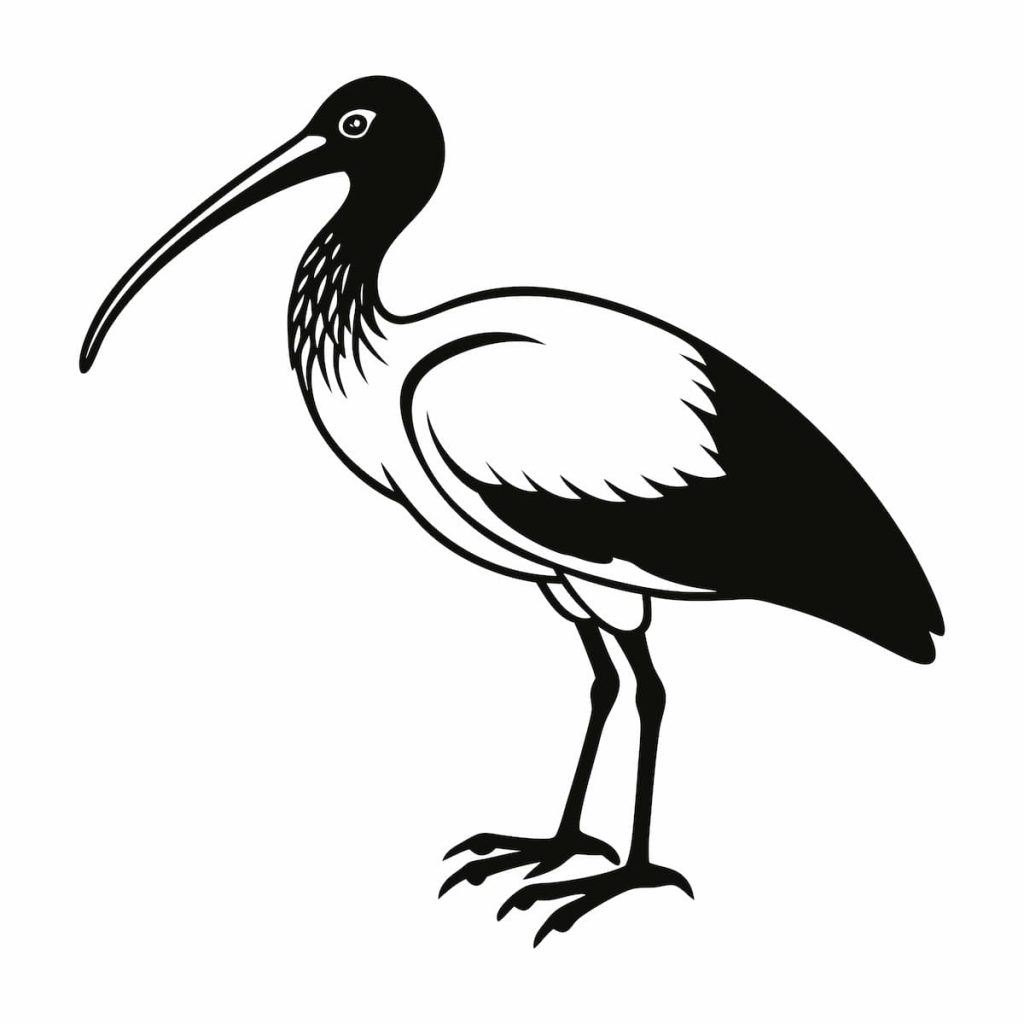
Ibis Bird
-
The Baboon
Thoth has also assumed the form of a baboon, which is known to greet the rising sun with intense chattering that marks the beginning of time and light, as well. As a lunar deity, the baboon form, on the other hand, also represented wit, observation powers, and the relationship between light and shadow, that is, day and night, between life and other forms of alter.
-
Moon Disk and Crescent
The relationship of Thoth with the moon meant that the crescent moon and the full moon (figure) were both powerful symbols of his divine power. These two symbols were associated with his job of organizing time, managing calendars, and regulating cosmic activities. All of which was appreciated by the people at the time as it balanced the sacred rituals and harvesting seasons with what was out there in the cosmos.
-
Writing Palette and Stylus
Scribal palette, reed pens, and papyrus scrolls are essential to Thoth’s main calling as the scribe of the gods. Through these symbols, his relationship with Egyptian hieroglyphs, the sacred books, and the lyre of wisdom is emphasized.
Every symbol had a purpose. Each one was much more functional. Apart from the fact that each symbol associated with different elements of this or that amuletic image underscored the divinity of the hero, or generally ornamented a work of art. This is to say that each of the attached symbols was not just a certain part of the intrinsic symbolic item or the belief that it was synthetic; the perceived wisdom of the gods was channeled through Thoth and was written, quantified, and even stored by him.
3. Thoth’s Role in the Eye of Horus Myth
The Wadjet, another name for the Eye of Horus, is an ancient Egyptian symbol that conveys a lot of strength. Even though it is more associated with protection, healing, and restoration, the deity Thoth is also involved in the legend of this holy depiction. The story told in Egyptian dating back over thousands of years is that God Horus, in an encounter with his brother Set, the god of chaos, lost his left eye. The eye was cut into many pieces, which signifies the pain of Horus, and equally, the destruction of peace. The eye was claimed to have been assembled by Thoth, gathering the various pieces of the eye together in one, hence exhibiting his priestly and spiritual power. This changed the principle of Horus’s lost eye to the oldest Egyptian concept of Indemnity, Renewal, and Safe Keeping.
Thoth and the Eye of Horus That Restores The Order and Keeps The Balance
In this unique story, Thoth not only serves as a sorcerer but also as a mender of psychic and physical destruction. By engaging in the process of bringing the Eye of Horus back from the dead, so to speak, we find, he is close to the earlier anxieties of the people, which are the faith in and the reality of new birth in ancient Egypt’s monotheistic religion.
In terms of scale, the Eye of Horus also has significance. In this case, the whole eye was divided into numerical coding parts, which almost equates to one hole number value, giving once again a reference to Thoth and the aspect of keeping the numbers in good order. For that matter, the Eye of Horus was mostly associated with the protection and safe drinking of the god’s margin, to which Thoth, again, was the scribe and the verifier of the law.
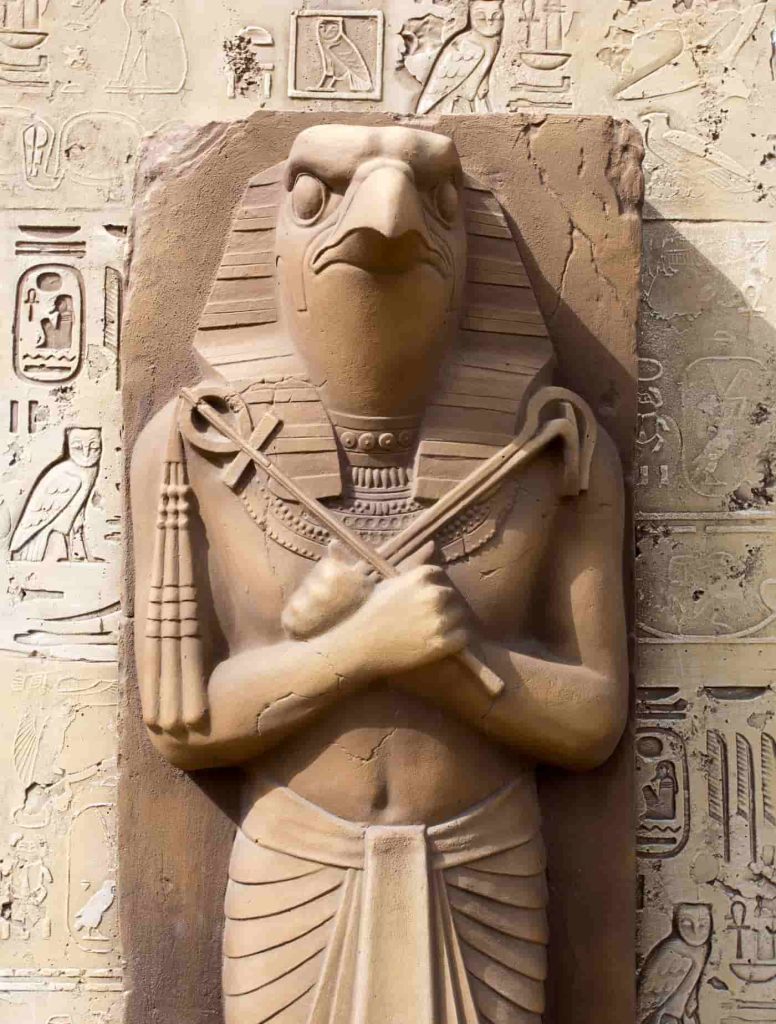
Apart from that, the other powerful aspects entailed in power symbolization are tied to the symbolic function of the eye that Thoth is part of, such as the functions of re-energizing, reharmonizing, and resecuring the cosmic authority.
4. The Mysterious Book of Thoth: Magic and Forbidden Knowledge
One of the most enigmatic and fairy-like symbols from ancient mythology fragments is the Book of Thoth, a mythical work purported to contain all secrets of the gods. There are no records of any existing original of this presumed text, yet this legend has been in existence for ages, as it was and continues to be a subject of great interest for erudite people, esoteric sects, as well as ordinary historians.
As the ancient Egyptians believed, it was Thoth, the god, who was the very author of the Book of Thoth, and the knowledge contained in that book included the ways to practice magic, how to understand the hereafter, clarify communication with animals, and develop cosmic tools. It was also fervently held that he who read from it was the origin of all wisdom and power; however, the limitations, as they say, were quite unfortunate. A number of its versions also point out that some men were badly affected either by a divine curse after having tampered with the book or by wild behavior which cropped up after attempting to read from the book.
The Book of Thoth and the Birth of Hermeticism
A scroll or tablet, along with symbols such as the eye, the moon, or the sun, is displayed when portraying the book in artistic and esoteric contexts. These symbols are often combined with the image of the book for the sake of manipulating energies or spirits, whatever meaning that could offer.
There is also a certain dimension to the Book of Thoth in Hermetic Philosophy since it traces its roots to the aforementioned Egyptian god, but Thoth is identified with Hermes Trismegistus, who is responsible for, among other things, the writing of the Emerald Tablet and other mystic works. The engagement of these two cultures gave rise to a concept which, through the ages, came to be known as Hermeticism, a system of thought that dealt extensively with spiritual change, alchemy, and global knowledge.
Much as the book may most likely be a product of human imagination, the symbolic value of the book continues to be on record. It is the object of divine quest, it is a line of difference between human and divine, and it is the need in human beings to always quit looking for what is present on the surface.
5. Symbolism of Thoth in Egyptian Philosophy and Spirituality
The iconography of Thoth was grounded in the spirituality of ancient Egypt with concepts of deep philosophical, cosmological, and moral implications. Each symbol conferred rich symbolic messages relating to the concept of wisdom, equilibrium, and divine order.
The ibis, perhaps the most emblematic bird, not just for the pictures that were drawn but because of its activity, was not purposeless. They noticed the ibis was around often by the Nile, moving with deliberation and control, and always with solitude. All of this made this the perfect image of controlled meditation, analysis of the inner, and self-purity, all that was considered to be part of the identity of Thoth.
With another animal, however, the baboon was one of the symbols of Thoth, where it was also praised most highly for its intellec,t and cries every morning at the arrival of the sun. Hence, in his baboon aspect as a lunar god, Thoth conveyed the notion of dualism, dichotomy, opposites, and cosmic order. He was able to reconcile things such as day and night, body and mind, this world and the next.
Understanding the Symbols of Thoth and Their Meaning in Ancient Egyptian Belief
These instruments of his, i.e., the bulls, a pen, and a scroll, served their academic purposes in images and were therefore far from simple literacy tools. They were the ones who owned the power of inscribing the manifested truth, regulating the sacred code of justice, and passing knowledge to the next generations. Therefore, in that capacity, Thoth assumed the role of a mediator connecting the human and the divine, the visible and invisible worlds.
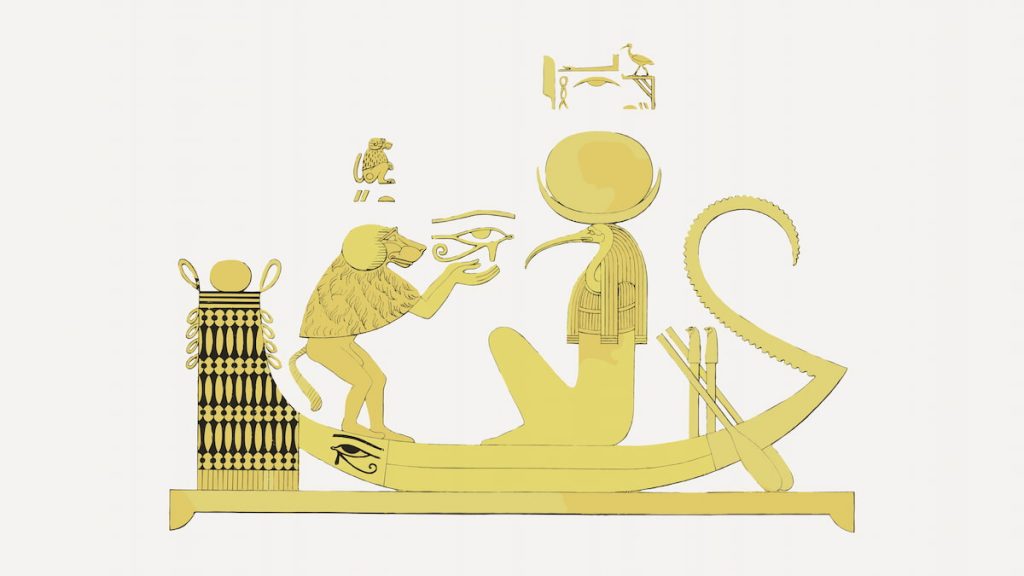
His head sometimes bore the representation of a moon disk and crescent moons, common features in temple designs, reinforced the image of Thoth, the order-specific in the distribution of time. The moon’s phases corresponded to the particular periods of Thoth’s functioning, such as management of liturgical rites, cyclic schemas, and, in general, harmony maintenance.
In sum, these icons not only reveal information about Thoth they also reveal how ancient Egyptians understood the world. This image provides readers with a sense of structure, order, and intelligence concerning the world at large, such as Thoth.
6. 🔟 10 Fascinating Facts About Thoth You Should Know
This, as a few examples, shows that in ancient Egyptian belief, Djehuty (Thoth) is among the many Guardian Gods of the Egyptians. Thoth, a reservoir of religious wisdom, had a hand in almost every aspect of society, from science and writing to the afterlife and even magic. Such aspects of this god can be shown below in points to illustrate his influence:
-
1. God’s Wisdom and Writing
The people of ancient Egypt considered him to belong to the world of wisdom, ideas, and deities. It is believed that he is the creator of the art of writing in hieroglyphics, making him the patron of all scribes as well as scholars.
-
2. Deity and Planner of Timekeeping
Thoth was mainly connected to the moon, which aided in maintaining the relationship between time and defined events, including days and monument celebrations. His lunar association was essential for the spiritual and agricultural maintenance of Egypt.
-
3. Illustrations of an Ibis or Baboon
Thoth is often represented as a man with an ibis head or sometimes as a baboon. These animals were linked to intelligence, alertness, and consciousness.
-
4. Divine Heavy Pen
He executed the role of guardian of divine records, particularly in the afterlife, where he chronicled the weighing of the heart and the judgment of souls.
-
5. Restorer of Horus’ Eye
In a famous myth, Thoth healed or restored the Eye of Horus, making it an icon of restoration, enhancement, and protection.
-
6. Lord of Ma’at and Order
Thoth was an ally of Ma’at, the goddess of truth. Together, they upheld balance, natural justice, and cosmic order across all creation.
-
7. Book of Thoth in His Hands
Many legends speak of the Book of Thoth, said to be in his custody. It is believed to contain magic formulas, knowledge of creation, and the structure of the universe.
-
8. Venerated by Scribes and Their Associates
Thoth was so revered that scribes paid tribute to him before writing in temples and schools, asking that he guide their hands and minds.
-
9. Assimilated with Hermes Trismegistus
Greek mythology equated Thoth with Hermes, forming the figure of Hermes Trismegistus, a foundation for Hermeticism, alchemy, and esoteric philosophy.
-
10. Remnants of His Legacy Today
Symbols like the ibis, crescent moon, writing palette, and papyrus scroll are still found in today’s spiritual practices, from tattoos and contemporary art to theater as emblems of knowledge, balance, and transformation.

